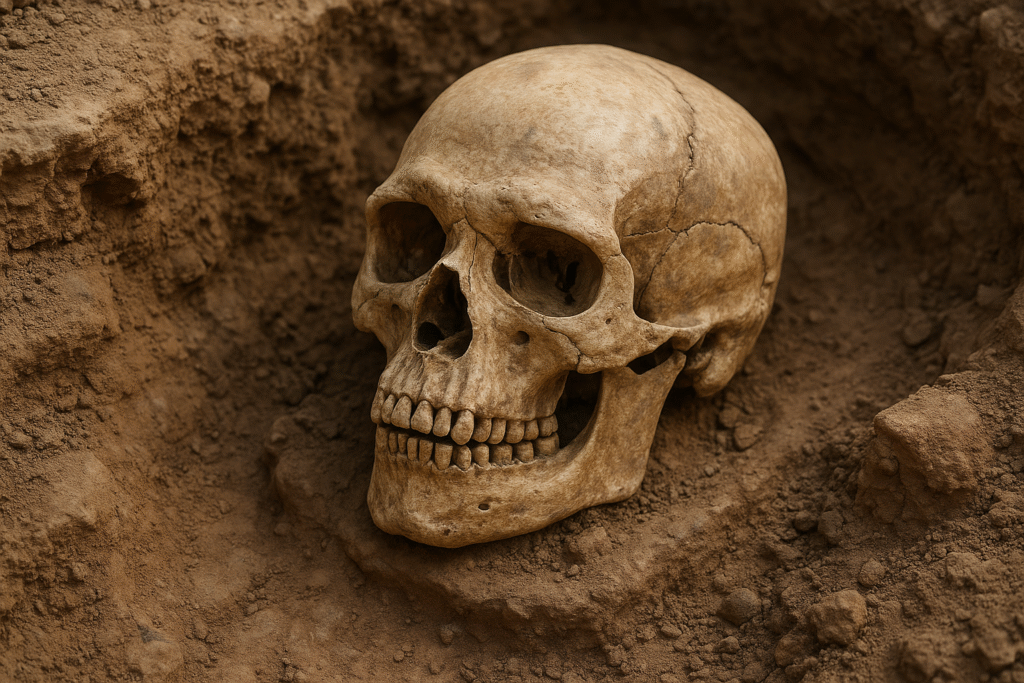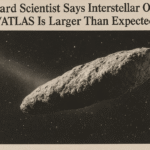By Harshit | 26 September 2025 | Hubei Province, China | 20:45 CST
A million-year-old human skull unearthed in central China is forcing scientists to reconsider the origins of our species. Researchers claim that the find suggests Homo sapiens may have begun to emerge at least half a million years earlier than previously believed, fundamentally reshaping the timeline of human evolution.
A Landmark Discovery
The fossil, known as Yunxian 2, was discovered in Hubei Province and initially thought to belong to Homo erectus, a direct ancestor of modern humans. Dated to around one million years ago, the skull appeared far too ancient to be associated with Homo sapiens. However, a new analysis published in the journal Science suggests it belongs instead to Homo longi, a sister species closely related to both Neanderthals and early Homo sapiens.
Professor Xijun Ni of Fudan University, who co-led the study, described the team’s reaction:
“From the very beginning, when we got the result, we thought it was unbelievable. How could that be so deep into the past? But we tested it again and again, using all available models and methods, and we are now confident in the result.”
Redrawing the Human Family Tree
Until now, prevailing scientific consensus held that Homo sapiens diverged from earlier hominins about 600,000 years ago, with the earliest known fossils dating to 300,000 years ago in Africa. But if the new analysis is correct, early forms of our species may have existed nearly one million years ago, living alongside Neanderthals and Homo longi for hundreds of thousands of years.
Professor Chris Stringer of the UK’s Natural History Museum, also a co-lead on the research, said the implications are profound.
“This study suggests there are probably million-year-old fossils of Homo sapiens somewhere on our planet — we just haven’t found them yet,” he explained.
The analysis used two key approaches: detailed measurements of skull shape and genetic comparisons with known species. Both methods pointed away from Homo erectus and toward a more advanced lineage.
Skepticism and Debate
Not all experts are convinced. Dr Aylwyn Scally, an evolutionary geneticist at the University of Cambridge, cautioned against drawing definitive conclusions.
“One has to be particularly tentative about the timing estimates, because those are very difficult to do, regardless of whether you are looking at genetic or fossil evidence,” he said. “Even with the largest datasets, it is very difficult to place a time when these populations may have co-existed within 100,000 years, or even more.”
While acknowledging the findings are “plausible,” Dr Scally stressed that more evidence — ideally including DNA from the fossils — would be required to settle the debate.
Solving the “Muddle in the Middle”
For decades, paleoanthropologists have struggled with a collection of fossils dating from 800,000 to 100,000 years ago that defied easy classification. These remains have often been described as part of the so-called “muddle in the middle” of human evolution.
By pushing the emergence of Homo sapiens, Neanderthals, and Homo longi further back in time, the new study provides a possible solution. It suggests that many of these ambiguous fossils could be grouped into one of the three lineages or their close ancestors.
Professor Ni likened human evolution to a tree with several intertwined branches.
“There were three major branches — Homo sapiens, Neanderthals, and Homo longi. They may have interbred and coexisted for almost one million years. This is an unbelievable result.”
Restoring a Distorted Fossil
The Yunxian skulls were badly crushed when excavated, which contributed to their earlier misclassification. To correct this, the team used advanced computer modelling to digitally “undistort” the fossils. 3D-printed replicas revealed features inconsistent with Homo erectus and more aligned with later species.
This reanalysis underscores how new technologies can breathe fresh life into long-standing fossil discoveries, enabling researchers to see ancient evidence in ways not possible before.
Implications for Human Origins
The discovery could reframe the geographic story of human evolution. With million-year-old fossils in Africa, Europe, and now Asia, the possibility arises that early forms of Homo sapiens may have appeared in multiple regions, not exclusively Africa.
Still, many researchers emphasize caution. As Professor Stringer noted, “There is some genetic evidence pointing to even earlier emergence of our species, which may have recombined with our lineage, but this is not yet proven.”
If confirmed, the earlier timeline means that large-brained humans shared the planet for nearly a million years, interacting and perhaps interbreeding, shaping the genetic diversity we see today.
What’s Next
Future excavations in Asia, Africa, and Europe may uncover additional fossils to clarify the picture. Genetic sequencing, if possible from Yunxian or similar remains, would provide more definitive answers.
For now, the Yunxian 2 skull represents a major shift in thinking — one that may rewrite the first chapters of human history and challenge our understanding of where and when Homo sapiens first emerged.







